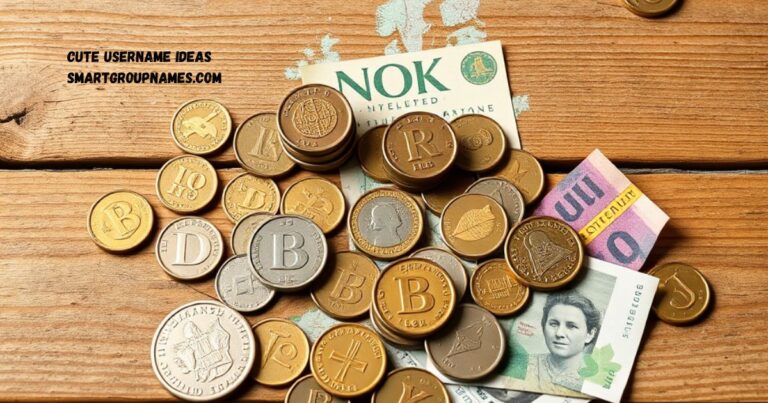Growing up with a love for languages, I often noticed how a term can carry more than just its dictionary meaning. Take kroner, for example, a word I first came across during a school project about European currency systems.
What fascinated me was that kroner isn’t just money; it’s a linguistic thread connecting Denmark, Norway, and Sweden through a shared economic history. The word comes from krone, which means “crown,” reflecting both societal and cultural symbolism embedded in the coin itself.
This small word opened up a new world where language isn’t static, it’s a dynamic, multifaceted tool that shifts with trends, economy, and even how a reader perceives it.
Later in college, I explored how terms like kroner and even unrelated words like hiatus evolve over time. Though hiatus means a break, its flexible use across contexts shows how words adapt.
Similarly, kroner may seem fixed in its definition, but it tells a deeper story when viewed through comprehensive understanding. Writers, translators, and language enthusiasts know this well, a single word can embody an entire culture and societal trend.
Whether you’re casually learning or studying seriously, understanding kroner goes beyond currency; it teaches us how language molds with purpose.
Historical Background of the Kroner System

Explain the roots of the kroner system before 1873–1875 in all three countries. Include details about the rigsdaler (Denmark), speciedaler (Norway), and riksdaler (Sweden) and how the Scandinavian Monetary Union played a role in harmonizing these currencies.
Definition and Origin of Korner
I remember the first time I came across the term “kroner” while studying European economies, it felt more than just a currency. The definition of kroner goes back to its origin as the plural form of krone, which means “crown” in English.
Used officially in several Scandinavian and Nordic countries, each version carries a distinct story and economic identity. For example, Denmark uses the Danish krone (DKK), Norway has the Norwegian krone (NOK), and Sweden uses the Swedish krona (SEK)—all forming part of the broader kroner family.
As someone deeply interested in cultural linguistics, I’ve always been intrigued by how currency names reflect history. These currencies are more than just mediums of exchange, they hold significance in daily life, trade, and identity.
While the coins and notes may differ slightly, the shared use of kroner links these countries in a unique way. It’s fascinating that a single word like kroner can represent different economies yet remain rooted in one historical thread.
Whether you’re curious about what country still uses kroner, or exploring its deeper meaning, it always circles back to a rich, shared past and cultural unity.
Norwegian Krone (NOK)
While studying currency unions in university, I came across the story of the Norwegian krone, and it quickly became one of my favorites. It was introduced in 1875, replacing the older speciedaler, just as Norway took a bold step by joining the Scandinavian Monetary Union—a system that lasted until World War I.
That move wasn’t just political; it was a practical decision aimed at simplifying trade and strengthening regional financial unity.
Today, the krone remains a strong currency, subdivided into 100 øre, though the smaller denominations are no longer in circulation.
When I visited Oslo, I noticed that coins in 1, 5, 10, and 20 kroner were commonly used. The banknotes, just like in neighboring countries, include 50, 100, 200, 500, and 1000 kroner, each carrying national imagery and cultural pride.
The Norwegian krone (NOK) not only reflects economic history but also showcases the identity of modern-day Norway.
Danish Krone (DKK)
When I visited Denmark, one of the first things I noticed was how smoothly the Danish krone operates across the country and its territories, including Greenland and the Faroe Islands.
These regions are the primary users of the currency, and the term kroner is common in daily transactions. It’s not just money; it’s a national symbol that binds the kingdom together.
The Danish krone was introduced on January 1, 1875, when it replaced the old rigsdaler to become the official currency of the nation. It’s subdivided into 100 øre, with coins available in denominations of 50 øre, 1, 2, 5, 10, and 20 kroner.
For larger amounts, banknotes come in 50, 100, 200, 500, and 1000 kroner. This structure reflects not just convenience but also historical depth in Danish financial planning.
Swedish Krona (SEK)
When I traveled to Sweden, I was struck by the simplicity and efficiency of its currency system. The krona was introduced in 1873, replacing the older riksdaler, as part of a regional push for monetary modernization.
The currency is subdivided into 100 öre, although öre coins were officially discontinued in 2010, which reflects how modern transactions continue to evolve.
Today, coins are available in 1, 2, 5, and 10 kronor, making small purchases easy. For larger expenses, banknotes come in 20, 50, 100, 200, 500, and 1000 kronor. The structure of the Swedish krona (SEK) reflects both practicality and the nation’s historical legacy.
“Kroner” in Slang
While traveling through Scandinavian countries, I often heard locals casually toss around the word kroner in everyday informal contexts. In slang, it’s not just a reference to money, but a way of expressing lifestyle.
Someone might say, “I need a few kroner to hit the club tonight,” or “Living my best life with a pocket full of kroner!”—phrases that sound fun and familiar when you’re out and about.
This playful usage of kroner emphasizes its role in casual or colloquial settings, often tied to leisure or discretionary spending. In this sense, the word carries a cultural weight that goes beyond its face value, blending the idea of currency with everyday joy and freedom.
The Scandinavian Monetary Union
Explore how and why Denmark, Norway, and Sweden agreed to standardize their currencies. Discuss when the union was formed, how long it lasted, and why it dissolved after World War I. Also, touch upon how the union impacted trade and economic integration.
Kroner vs. Other Currencies
Compare kroner to other major global currencies like the euro, dollar, or pound. You could include exchange rate trends, international use, and how each kroner-based country chose not to adopt the euro despite being in Europe.
Modern Use of Digital Kroner
Discuss the move toward digital payments in Nordic countries, especially Sweden, which is known for being close to becoming a cashless society. Mention mobile payment apps like Vipps (Norway), MobilePay (Denmark), and Swish (Sweden).
Visual Design of Kroner Banknotes and Coins
Describe the designs, symbols, and famous people featured on kroner banknotes and coins. Touch on themes of national pride, history, and art that are embedded in the currency designs of each country.
Kroner in Pop Culture and Media
Analyze how the word kroner appears in films, TV shows, songs, or books from Scandinavian countries. You can even mention how tourists or expats often share their experiences handling kroner.
Collector’s Value and Rare Kroner
Talk about rare coins or notes that have become collector’s items. Include examples of discontinued øre coins, limited-edition releases, or errors that made specific kroners valuable among numismatists.
Future of Kroner: Will They Last?
Explore discussions or debates around whether kroner will remain as standalone currencies or whether there’s any push toward regional economic changes. Mention current government or central bank stances.
FAQs
What is the difference between Krone and Kroner?
“Krone” is the singular form, meaning “crown” in Danish and Norwegian, while “kroner” is the plural form used when referring to multiple units of the currency.
Which countries use Kroner as their official currency?
Denmark, Norway, and Iceland use versions of the “krone” or “krona” as their official currencies. Sweden uses “krona,” which is similar but linguistically Swedish. All are often grouped under the broader term “kroner.”
What is the origin of the Danish Krone (DKK)?
The Danish krone was introduced on January 1, 1875, replacing the rigsdaler. It became the official currency of Denmark and its territories, including Greenland and the Faroe Islands.
When was the Norwegian Krone (NOK) introduced?
The Norwegian krone was introduced in 1875, replacing the speciedaler. Norway joined the Scandinavian Monetary Union the same year, which lasted until World War I.
Why were Swedish öre coins discontinued?
Sweden discontinued öre coins in 2010 due to their declining purchasing power and limited use in daily transactions. Prices are still rounded to the nearest krona in cash payments.
How is Kroner used in slang?
In informal and slang usage, “kroner” can simply refer to money, especially in casual conversations in Scandinavian countries. It’s often used in a fun or laid-back way to talk about spending.
Are Kroner still used in digital payments?
Yes, all three countries—Denmark, Norway, and Sweden—actively use kroner in digital transactions through mobile apps like MobilePay, Vipps, and Swish.
Do these countries plan to adopt the Euro?
So far, Denmark has opted out of the Euro, and both Norway and Sweden have no immediate plans to adopt it. All three countries continue to use their own versions of the kroner/krona.
Conclusion
The kroner may seem like a simple unit of currency, but it carries a rich story that spans history, culture, and modern economics in Scandinavian countries. Whether it’s the Danish krone (DKK), Norwegian krone (NOK), or Swedish krona (SEK), each version reflects national identity, economic resilience, and a shared past rooted in the Scandinavian Monetary Union. From formal banknotes to slang in everyday speech, kroner continues to be more than just money—it’s a symbol of heritage and daily life.
Understanding how kroner evolved, how it’s used today in coins, notes, and even digital transactions, gives us a deeper appreciation of the role currency plays in shaping societies. Whether you’re a traveler, a historian, or simply curious about global money systems, the story of the kroner offers insights far beyond numbers—into values, identity, and connection across borders.
Read More: Cute Username Ideas for Snapchat: Your Ultimate Guide to Creative Snap Names

JCK Smith is a seasoned writer specializing in the names niche, helping individuals and businesses find the perfect names for groups, teams, brands, and more. With years of experience in creative naming, JCK blends originality with strategic SEO to craft lists that rank high on search engines and provide real value to users.











